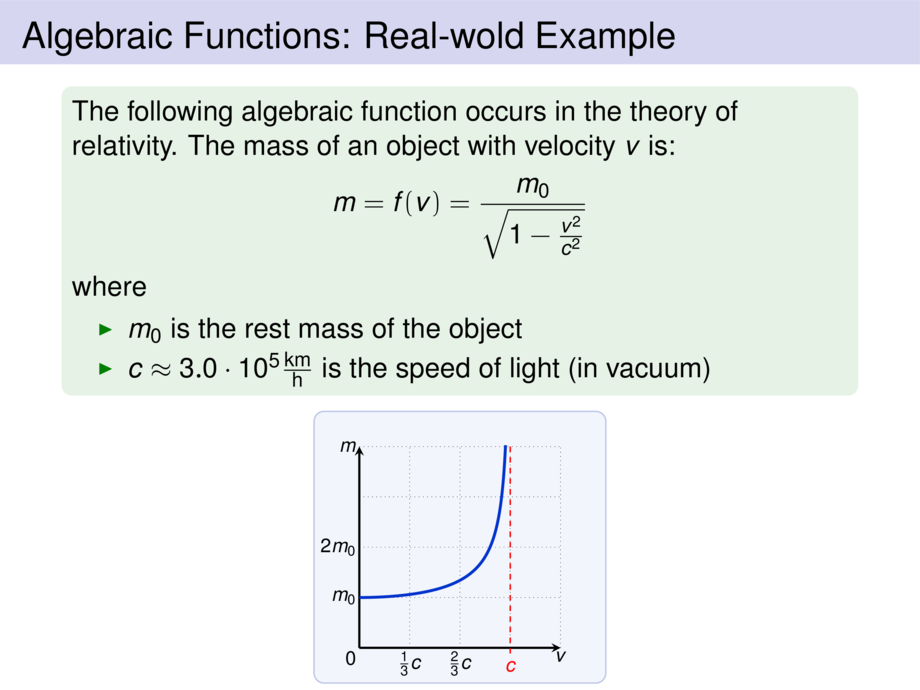



































































































52/353
\begin{frame}
\frametitle{Algebraic Functions: Real-wold Example}
\begin{exampleblock}{}
The following algebraic function occurs in the theory of relativity.
The mass of an object with velocity $v$ is:
\begin{talign}
m = f(v) = \frac{m_0}{\sqrt{1-\frac{v^2}{c^2}}}
\end{talign}
where
\begin{itemize}
\item $m_0$ is the rest mass of the object
\item $c \approx 3.0 \cdot 10^5 \frac{\text{km}}{\text{h}}$ is the speed of light (in vacuum)
\end{itemize}
\end{exampleblock}
\begin{center}
\scalebox{.7}{
\begin{tikzpicture}[default,baseline=1cm]
{\def\diaborderx{.9cm}
\def\diabordery{.7cm}
\def\diax{v}
\def\diay{m}
\diagram{0}{4}{0}{4}{1}}
\diagramannotatez
\diagramannotatexx{1/$\frac{1}{3}c$,2/$\frac{2}{3}c$}
\diagramannotateyy{1/$m_0$,2/$2m_0$}
\begin{scope}[ultra thick]
\draw[cblue] plot[smooth,domain=0:2.91,samples=290] (\x,{1/(sqrt(1-pow(\x/3,2)))});
\end{scope}
\draw[cred,dashed] (3,4) -- node[at end,below] {$c$} (3,-.2);
\end{tikzpicture}
}\\\smallskip
\end{center}
\end{frame}

